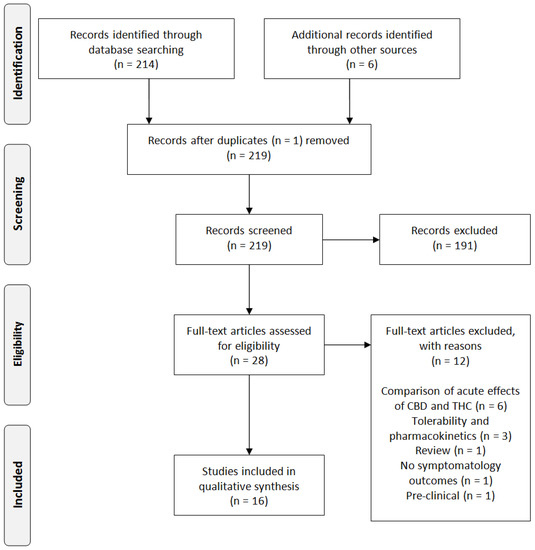
“The endogenous cannabinoid (eCB) system plays an important role in the pathophysiology of both psychotic disorders and substance use disorders (SUDs). The non-psychoactive cannabinoid compound, cannabidiol (CBD) is a highly promising tool in the treatment of both disorders. Here we review human clinical studies that investigated the efficacy of CBD treatment for schizophrenia, substance use disorders, and their comorbidity. In particular, we examined possible profiles of patients who may benefit the most from CBD treatment. CBD, either as monotherapy or added to regular antipsychotic medication, improved symptoms in patients with schizophrenia, with particularly promising effects in the early stages of illness. A potential biomarker is the level of anandamide in blood. CBD and THC mixtures showed positive effects in reducing short-term withdrawal and craving in cannabis use disorders. Studies on schizophrenia and comorbid substance use are lacking. Future studies should focus on the effects of CBD on psychotic disorders in different stages of illness, together with the effects on comorbid substance use. These studies should use standardized measures to assess cannabis use. In addition, future efforts should be taken to study the relationship between the eCB system, GABA/glutamate, and the immune system to reveal the underlying neurobiology of the effects of CBD.”








 “Bone is a complex tissue of the with unique properties such as high strength and regeneration capabilities while carrying out multiple functions. Bone regeneration occurs both in physiological situations (bone turnover) and pathological situations (e.g. fractures), being performed by osteoblasts and osteoclasts. If this process is inadequate, fracture nonunion or aseptic loosening of implants occurs and requires a complex treatment.
“Bone is a complex tissue of the with unique properties such as high strength and regeneration capabilities while carrying out multiple functions. Bone regeneration occurs both in physiological situations (bone turnover) and pathological situations (e.g. fractures), being performed by osteoblasts and osteoclasts. If this process is inadequate, fracture nonunion or aseptic loosening of implants occurs and requires a complex treatment.
 “Anandamide, the first identified endogenous
“Anandamide, the first identified endogenous